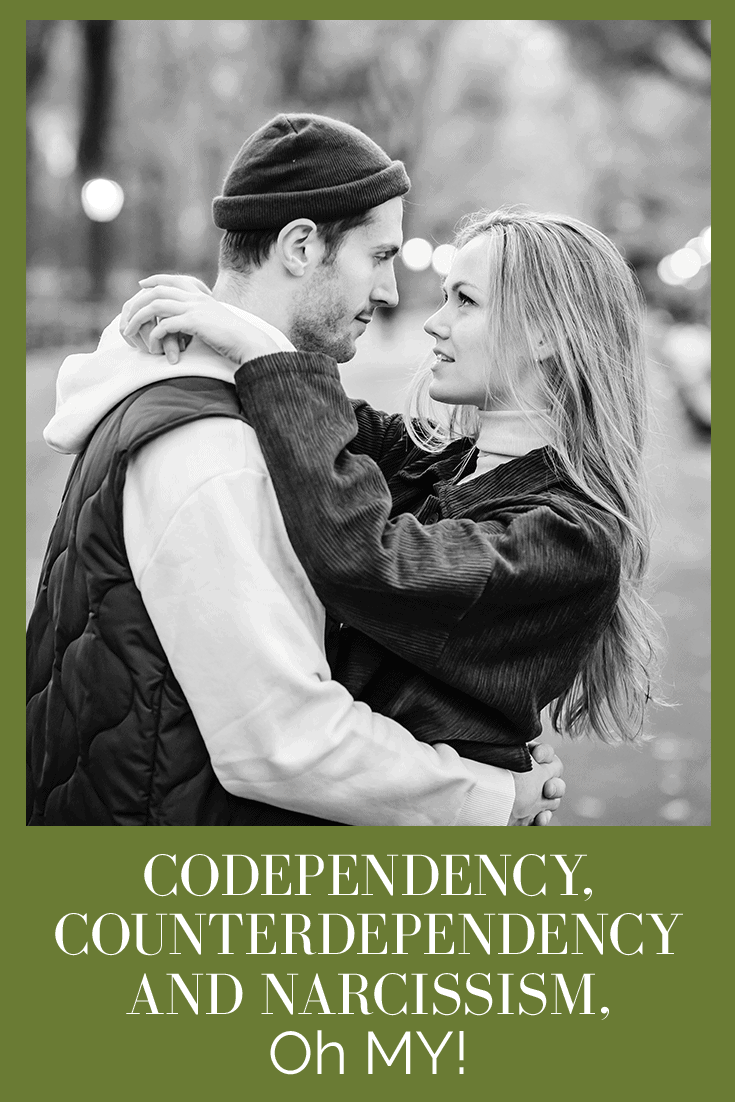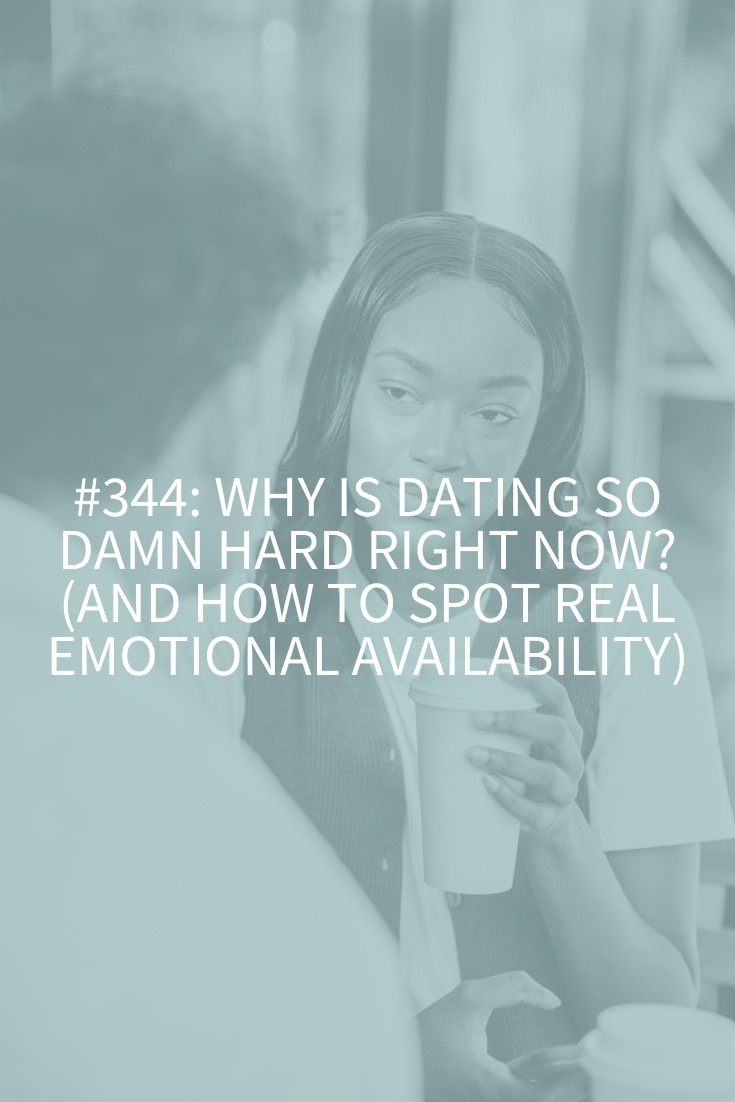
“What the hell is counter-dependency?” That was literally my response when I was asked to cover this topic for the podcast. In my over 35 years in the field, I’d never heard the term but, once I started my deep dive into learning everything about it, I realized that I had to do write about it to explain what it is and how it relates to codependency and narcissism. So, get yourself a cup of coffee and buckle up because today you’re going to get a clear picture of what all this is and my top 3 tips for making it all go away!
Let’s Start with Codependency
So, let’s start with codependency because you likely know what that is (if you don’t, you need to go listen to my podcast on the questions to ask yourself to know if you’re codependent). For now, let me just say a few things so you know for sure if you’re in this category:
- Codependents get their emotional lives fulfilled through others.
- If someone in their life is upset, they’re upset.
- Disappointing other people is their kryptonite and will keep them up all night wondering what they did wrong and how to fix it!
- Codependents become overly focused on other people’s needs instead of their own and generally don’t even know what their own needs really are.
- If you ask others for help easily, you’re not codependent.
Counter-Dependence
Now we’ve got this term counter-dependence, which has actually been around for about 15 years, so how I’ve missed it until now, I have no clue. Counter-dependency is pretty much the opposite of codependency on the outside, but comes from the same place of lack of self-worth on the inside.
Where a codependent is overly focused on others, the counter-dependent is focused on themselves and their own needs (I know this sounds like narcissism, which is why I’ll talk about the differences in a little bit). The counter-dependent is someone who avoids closeness and intimacy. They might be in a relationship, but they keep their own counsel and really aren’t looking to deeply bond with anyone else.
Codpendents don’t trust themselves (so need the love of others to reflect back that they’re OK) while the counter-dependents don’t trust anyone else but themselves. They have a deep mistrust of others so become very self-reliant.
From the outside some counter-dependents might seem like they have good relationships, but if you look closely, there’s actually a lot of distance and fear. They often fear commitment or monogamy and when they do get into relationships, they’ll likely get angry or leave if pushed to be vulnerable.
Some other notable traits include rigid boundaries or very black and white thinking, self-centeredness, and difficulty relaxing so they might be addicted to things like work, exercise or “doing.” (I guess if you’re always on the run, it’s hard for people to catch you).
Again, I know this sounds a lot like narcissism so let’s jump into the big difference between narcissism and counter-dependency.
Oh That Narcissism
First of all, counter-dependence (and codependence too for that matter) are not diagnosable conditions. Meaning, they’re not present in the big book that we mental health practitioners use to diagnose people (the Diagnostic and Statistical Manual of Mental Disorders – affectionately called the DSM). Narcissism is really on a different level than counter-dependency. Maybe you could think of counter-dependency as “narcissism light” but I think it’s deeper than that.
According to the DSM, the most important characteristics of Narcissistic Personality Disorder are grandiosity, seeking excessive admiration and a lack of empathy. These are not the central themes in someone with counter-dependence. There’s a different motivation behind the behavior and, in my opinion, it’s much more treatable than narcissism.
But Why, Abby?
Before we go further, I need to say a word about why people (aka: you) are any of these. Codependency, counter-dependency and narcissism, for the most part (aside from trauma later in life), result from how our early childhood was experienced. I say experienced because who you were as a person coming into this world is different from who someone else is coming into this world. We’re born with certain temperaments and into families at different times in their evolution, we’ve got different genders, and all kinds of other factors that make each person’s childhood slightly different, even when they’re raised in the same family. So how your mom acted as a parent might not have affected your older brother but might have had a negative impact on you.
Remember, all these terms really boil down to being psychological defense mechanisms. They’re all meant to protect ourselves from pain because we don’t trust: We either don’t trust ourselves (so look outside for validation) or we don’t trust others to be there for us (so keep them at arm’s length and rely on ourselves).
Trust and learning to trust begins the moment you’re born and this is all psychology 101 but I’m going to review it quickly so everything’s in context. You were completely dependent on your caregivers right from the get-go. How those caregivers reacted to your needs (like food, love and comfort) shaped how you developed trust. If your needs were met consistently and lovingly, then you learned to feel safe and trust your world.
If you think about it, the first relationship you ever have is with whoever took care of you when you were an infant. That first relationship hopefully taught you that you could say you needed something and get that need met.
Research has shown that how that first relationship goes directly relates to how you form relationships later in your life. And it’s not just parents. I’m talking about any adult caregivers, siblings and any other extended family who lived in your home and took care of you in any way – they all played a role too.
All of this trust bonding with caregivers culminates in something called your Attachment Style. Your attachment style reflects the emotional bond you developed with your caregiver(s) and how it reflects the trust and security you felt in that relationship. When caregivers don’t meet our needs as infants and small children, we develop what’s called insecure attachments styles, meaning we don’t feel trusting or secure. There are two main types of insecure attachment styles: anxious and avoidant. These two main styles are what underlie codependence, counter-dependence and two types of narcissism (there are four types and if you want more on that – I did a whole podcast about narcissists too)!
Are You Anxiously Attached?
Anxiously attached people would generally be considered “high maintenance.” They need a lot of attention and the adjectives that usually come to mind are things like “clingy or needy.” As adults, they look for high levels of emotional closeness, approval and communication from their partners, friends, children, family and coworkers, and can become overly dependent on others.
As you’ve likely already guessed, codependents generally have a more anxious attachment style.
Now, there’s also a kind of narcissist who fits in here and that’s the vulnerable narcissist. The vulnerable narcissist can often seem insecure and will look for reassurance in their relationships. They’re not codependent because they focus on themselves and their own needs first – and they will demand that from you. But, they can seem codependent because they can get very attached and become consumed with their partners or jobs in their efforts for constant validation.
Or Maybe You’re Avoidantly Attached
Avoidant adults are all about putting distance between themselves and others. This can be through Type A behavior, overscheduling or being a workaholic. They can seem indifferent and unaffected even in a crazy relationship. This is because, at their core, they keep their emotions somewhat closed off and don’t allow themselves to be truly vulnerable, intimate or emotionally close.
In a relationship, they’ll avoid true intimacy or baring their soul. Their partners are often frustrated that they can’t seem to fully show up emotionally. When things get serious, avoidants will use humor or other things to deflect. If all else fails, they’ll physically avoid or neglect the people around them.
Avoidants tend to keep their own counsel and will hide and make decisions on their own. They’re more easily able to “turn off” their feelings and not react or get too emotionally upset.
They definitely believe intellectually that being in a relationship and being close is important but, when that actually happens, they tend to pull away saying they feel trapped or suffocated. If they get too close, they think they’ll be hurt.
Avoidantly attached people tend to highly value their independence (once again, they don’t want to feel trapped). They generally don’t like to ask for help or depend too much on others. When things get too intimate, they’ll create distance by ignoring their calls or texts, fixating on “little” things and blowing them out of proportion, seeing only the negative, or prioritizing work or hobbies over their partner.
You can see how counter-dependents fit this bill to a tee and so do grandiose narcissists, which is who people typically think of when they hear that word – someone who cares only about themselves and lacks empathy.
So, Now What?!
By now you’re likely sitting there realizing that you’re either a little codependent or counter-dependent (OK, or maybe you’re realizing that you’re a LOT of either of those). The good news is that acknowledging and having those first steps of self-awareness are crucial to working on your stuff so you can create emotionally close and satisfying relationships!
But, I’m sure you’re also realizing you’ve got to take action! And my recommendations are that you work on the base issue which is getting more securely attached! So, here are my 3 tips:
- Self-Awareness. I know, I know. You’re sick and tired of me talking about self-awareness but, guess what!?! You won’t be able to make any of these changes if you’re not aware in your moments that you’re acting in old defeating behaviors.
- Start Identifying and Saying What You Need. It’s time to learn how to say what you really need. No passive-aggressive bullshit, no walking away, and no antics. It’s time to talk about real feelings and notice your discomfort in asking for help in a direct way.
- Notice Your Feelings. Notice what emotions you feel when you experience insecurity with others. Do you get anxious and clingy with your friends? Do you get angry and resentful at your boss? Are you jealous or distrustful with your partner? You’ve got a “feeling” pattern and it’s important to identify it and then redirect yourself in those moments.
OK, I lied – there’s a fourth tip I’d really like you to consider:
- You’re going to have to work on seeing what you haven’t seen before and therapy is the best way to do that. You’re basically a fish who doesn’t know it’s wet and having a therapist give you feedback about what you’re doing and your subconscious motivations is the first step in changing how you react in your relationships. If you’re anxiously attached, you likely need to work on self-esteem. For those who are more avoidantly attached, it’s about learning to be vulnerable and connecting to the people in your life with empathy and compassion.
There’s almost nothing better for you than taking a few minutes each day to set your day on the right track, so I’ve created this free Meditation Starter Kit. You just need 3 minutes to start your day with positive momentum!
RESOURCES:
How Attached Are You to Your Partner?
RESEARCH:
DSM-5: Diagnostic and Statistical Manual of Mental Disorders, 5th Edition






